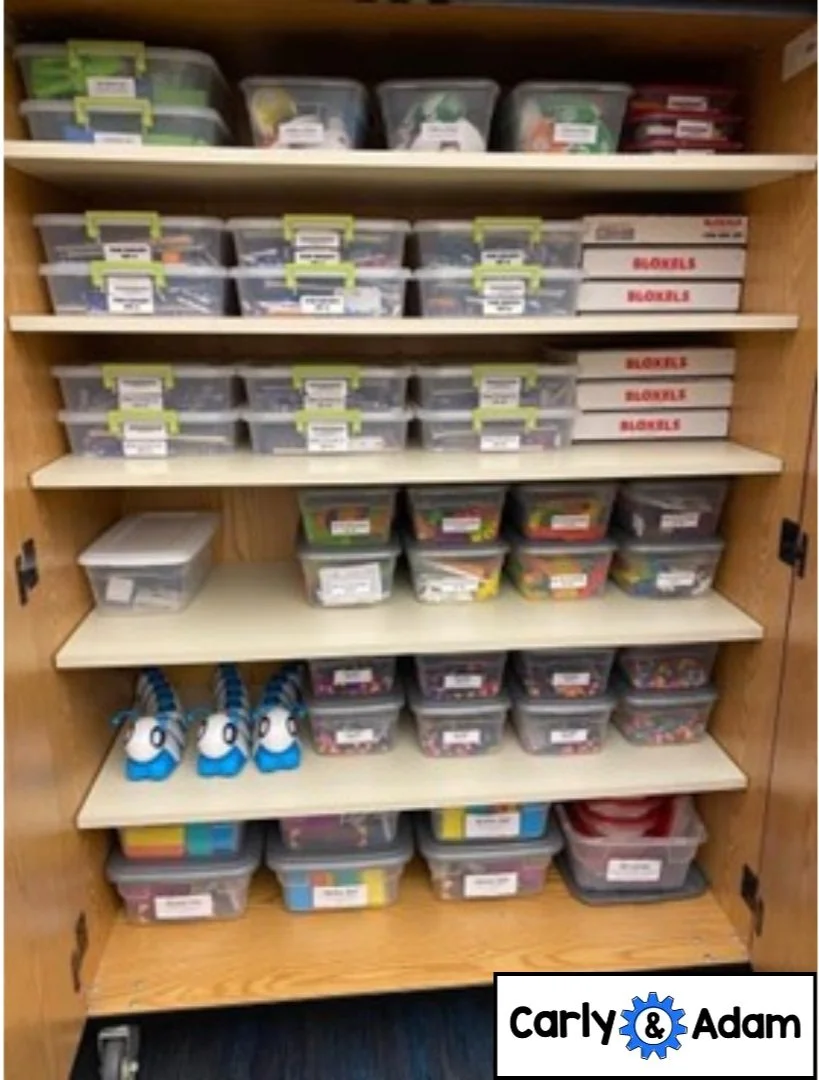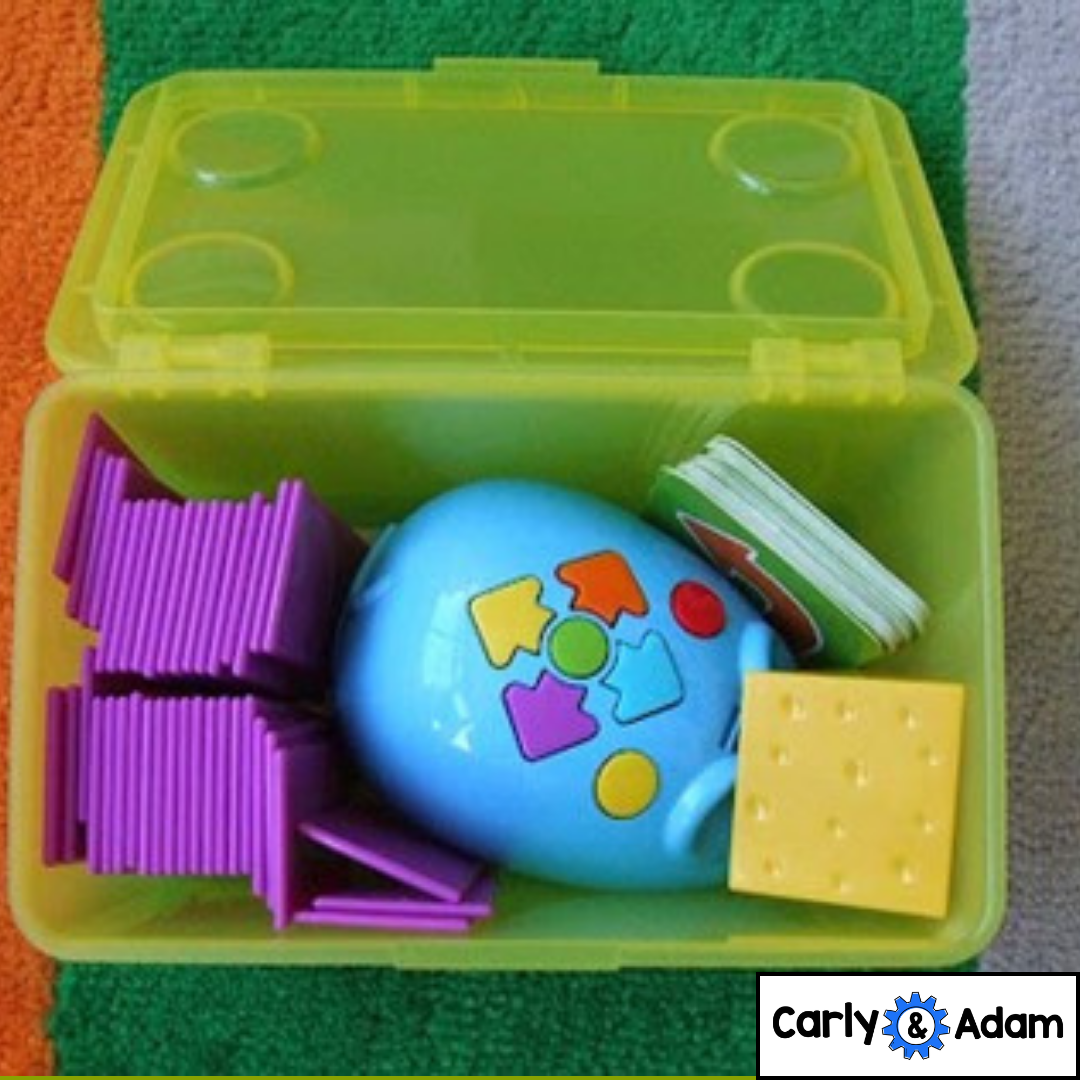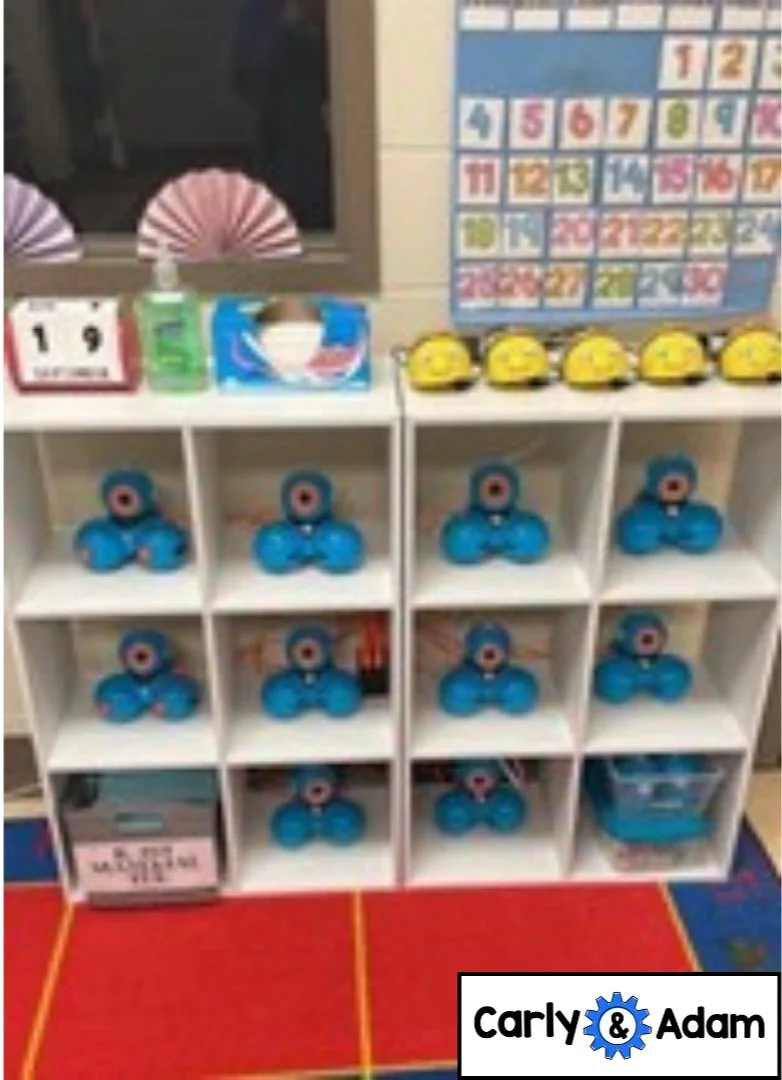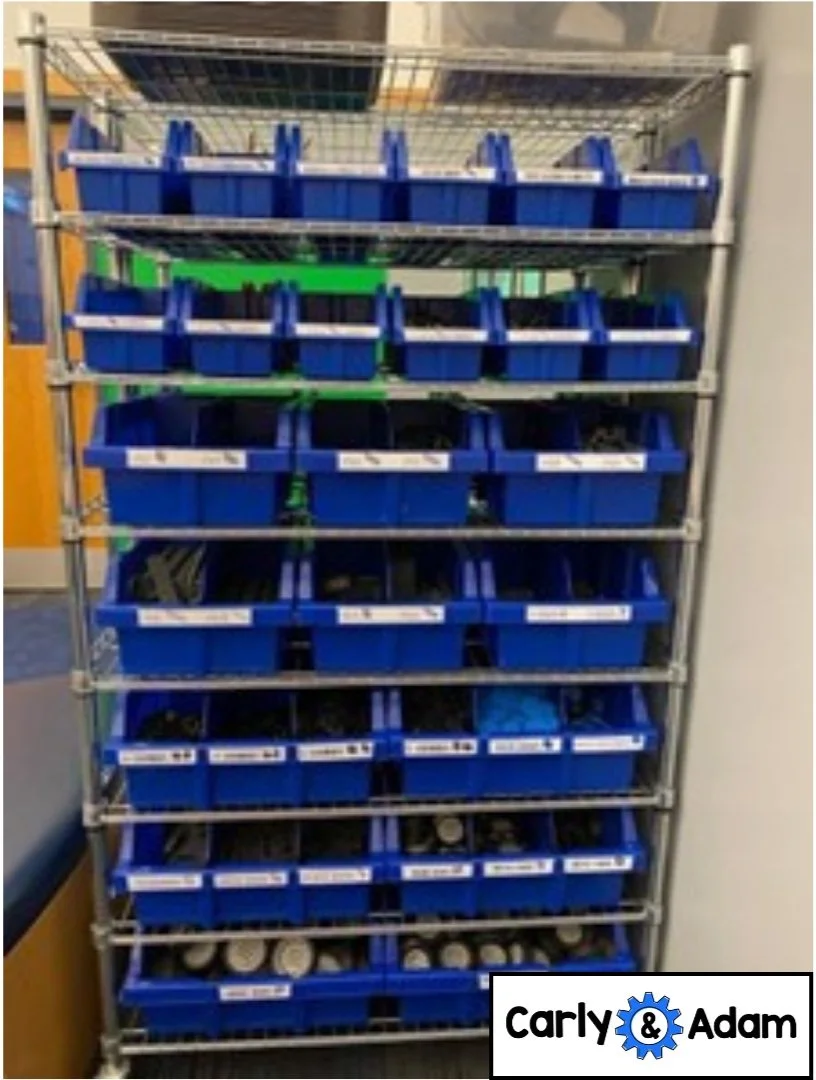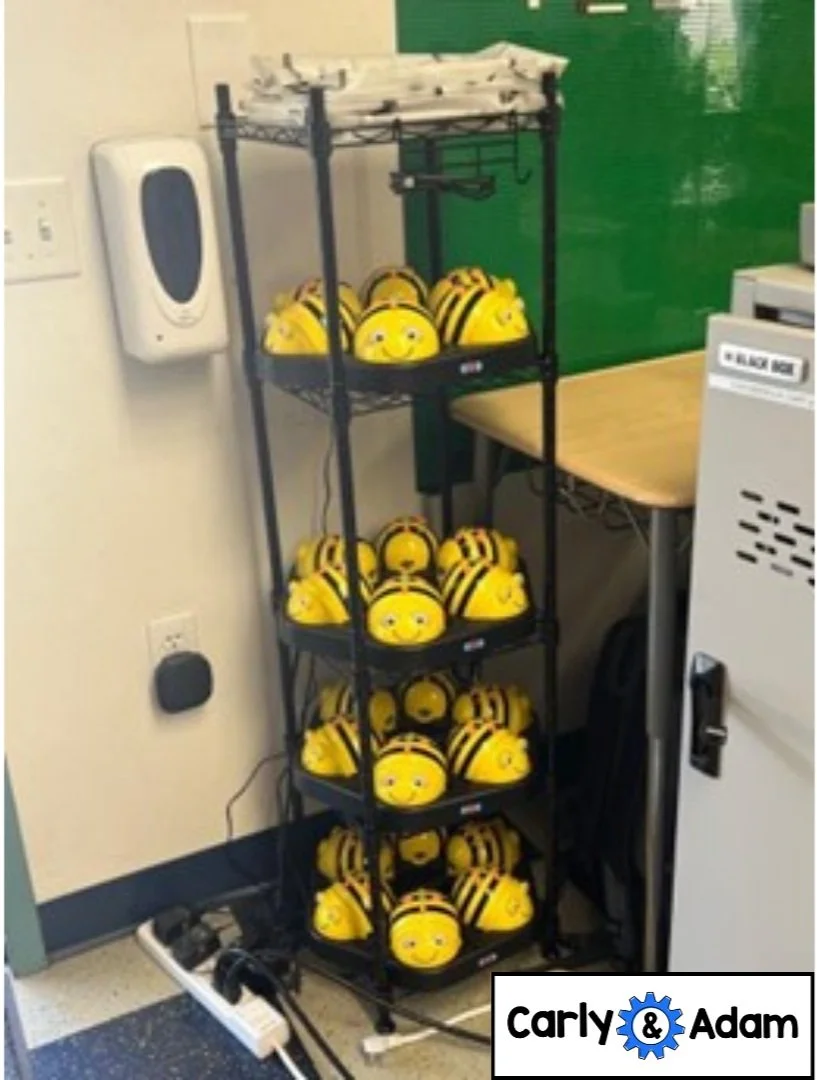4 Robot Storage Hacks for the Classroom
The following is a guest post from Dr. Jacie Maslyk.
Whether you are new to teaching STEM and robotics or if you’ve been teaching for years, finding the right storage solutions are probably an ongoing struggle.
How can you organize all of the pieces and parts?
Where do the batteries, cords, and cases go?
What is the best way to manage everything while still keeping it accessible to students?
This post will share some creative ideas for storing everything you need to teach robotics in the STEM classroom. Cabinets, carts, or bins, there are lots of creative hacks to manage robotics materials in the classroom.
4 Robot Storage Hacks for the Classroom:
Over the Door Shoe Holders
Clear Plastic Bins
Pencil Boxes
Cabinets, Shelves, and Carts
1. Over the Door Shoe Holders
While some storage solutions can get expensive, we know that most STEM teachers don’t have a large budget. There are a lot of inexpensive items that can help to provide some organization when it comes to your robotics materials.
Over the door shoe holders are a great way to hold STEM materials. Whether you need a place to store Legos, manipulatives, or robots like Beebots or Ozobots, this plastic organizer is perfect for all kinds of classroom storage. The clear pockets of the organizers are helpful so that students can see the available materials. It’s a spot for tucking in extra cords, headphones, or other tech tools.
2. Clear Plastic Bins
Dollar store bins (with or without lids) can also be a simple way to store robotics kits that have several pieces or components. Need a place to keep your Makey Makey wires and boards? A simple plastic bin might do the trick. Tiffany Coopman shared a picture of her organized robotics cabinet in our Facebook group. She uses clear plastic shoe box bins with lots of labels to keep everything in order.
3. Pencil Boxes
Check out this simple storage hack for Code and Go Mouse from TechAge Kids. Robots, coding cards, and maze walls can all fit inside before snapping the lid shut. Everything students need to start coding in an individual coding kit.
4. Cabinets, Shelves, and Carts
Perhaps you are lucky enough to have built-in storage cabinets in your classroom. Maybe you don’t have a classroom at all and need to be mobile with your robotics materials on a cart. There are a variety of different storage cabinets, shelves or carts that might meet your needs.
Bookcases or stackable bins make a great spot to store Dot and Dash robots. These cubes make the perfect place to park these robots. Cierra Makenna shared this storage solution which provides an organized space for students to get the materials they need.
Cierra Makenna
Need storage ideas for smaller pieces and robot parts?
This unit shared by Tiffany Coopman holds all of her Vex Robotics components. It provides easy access for students and includes labels for everything. It’s also on casters, so this unit can be wheeled down the hall or into other spaces.
Tiffany Coopman
Some storage cabinets or carts have charging capabilities built right in. You may need access to power and should think strategically about where these items should be set up in your classroom. Melanie Sowa-Li created her own creative storage and charging solutions with these metal racks, complete with power strips so that robots can be charged after each use. All her classroom devices, from Chromebooks to iPads to BB8s can all be stored in one location.
Melanie Sowa-Li
While this metal shelf wasn’t custom made, it looks like it could have been. Kristin Macerenka Sandford shared this small corner shelving unit which is the perfect size for storing and charging Beebots. When your classroom doesn’t have a lot of space to store all of the things you need to teach STEM, it is important to think creatively about the space that you have available.
Kristin Macerenka Sandford
Finding (and Funding) the Right Solutions
Just as you choose the right robotics tools that meet the needs of your students, you will also choose the right storage solutions to meet the needs of your classroom. Sometimes the perfect storage solution might be outside of your budget. Talk to your school leaders about available funds. Ask your parent teacher organization for support. Write a grant to get the materials you need. Funding your STEM space may be a challenge, but don’t hesitate to use your local resources and ask for help.
If you have other robotics storage hacks to share, please leave a comment below so that we can share your great ideas with the Carly and Adam community.
Have more questions or need additional resources?
Download our Free STEM challenges from our Free STEM Resource Library.
Join our Free Facebook Group.
For more STEM ideas, inspiration, and collaboration with other STEM teachers be sure to join our FREE Facebook group Elementary STEM Teachers with Carly and Adam!
We hope you have found this blog post helpful. To stay connected with Carly and Adam's teaching tips and classroom freebies be sure to follow us on Facebook, Pinterest, Teachers Pay Teachers, and subscribe to our blog!
An educator for the last 23 years, Dr. Jacie Maslyk, has served as a classroom teacher, reading specialist, elementary principal, and assistant superintendent. She is the author of STEAM Makers: Fostering Creativity and Innovation in the Elementary Classroom, Connect to Lead: Power Up Your Learning Network to Move Your School Forward (ISTE), Remaking Literacy: Innovative Instructional Strategies for Maker Learning and Unlock Creativity: Opening a World of Imagination With Your Students. You can read more on her blog, Creativity in the Making, at www.jaciemaslyk.blogspot.com. Connect with Jacie on Twitter @DrJacieMaslyk or email her at jaciemaslyk@gmail.com .


